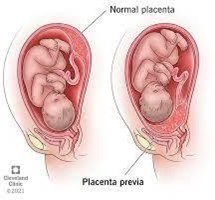A nurse is caring for a client who is pregnant and undergoing a nonstress test. The nurse records the FHR as 130 to 150/min, with no fetal movement for 15 min. Which of the following actions should the nurse take?
Turn the client onto her left side.
Encourage the client to walk around and then resume monitoring.
Apply vibroacoustic stimulation to the woman's abdomen.
Report the findings to the provider and prepare the client for induction of labor.
The Correct Answer is C
Choice A rationale:
Turning the client onto her left side is a common measure to improve fetal oxygenation and is often used during labor. However, in this scenario, the nurse needs to address the absence of fetal movement during the nonstress test.
Choice B rationale:
Encouraging the client to walk around and then resume monitoring is not appropriate when there is a concern about the absence of fetal movement during the nonstress test.
Choice C rationale:
Vibroacoustic stimulation involves using sound stimulation to elicit fetal movement. If there has been no fetal movement during the nonstress test, this intervention can be used to assess fetal well-being and provoke a response from the fetus.
Choice D rationale:
Preparing the client for induction of labor is not indicated based solely on the absence of fetal movement during a nonstress test. Further assessment and interventions are needed before considering induction.
Nursing Test Bank
Naxlex Comprehensive Predictor Exams
Related Questions
Correct Answer is D
Explanation
Choice A rationale: Applying ice to the perineal area is not indicated in the case of suspected placenta previa. Placenta previa is related to the location of the placenta in the uterus and is not affected by the perineal area. Ice is commonly used for perineal discomfort after vaginal delivery but is not appropriate for placenta previa.
Choice B rationale: When a client is suspected to have placenta previa, a vaginal exam should be avoided because it can cause trauma to the placenta, leading to significant bleeding. Placenta previa is a condition where the placenta covers part or all of the cervix, and any disruption of the placenta can result in bleeding, which poses a risk to both the mother and the baby. Therefore, a vaginal exam is contraindicated in this situation.
Choice C rationale: Performing a rectal exam is also not appropriate for a client with suspected placenta previa. Rectal exams do not provide any relevant information about the placenta's location, and they can potentially cause discomfort or bleeding in this situation.
Choice D rationale: Applying an external fetal monitor is an appropriate action when caring for a pregnant client, regardless of whether there is a suspected placenta previa. The external fetal monitor is used to assess the baby's heart rate and uterine contractions and is a routine part of prenatal care. However, it does not specifically address the issue of placenta previa. The nurse should be vigilant for any signs of bleeding or changes in fetal heart rate pattern, which may indicate placental issues, and report them promptly for further evaluation and management.

Correct Answer is A
Explanation
Choice A rationale:
A newborn can lose up to 10% of their birth weight in the first few days after birth, which is considered normal. By 7-14 days of age, the baby should have regained their birth weight if breastfeeding effectively.
Choice B rationale:
Gaining 0.25 oz (7 grams) per day after the fourth day of life is not a standard guideline for assessing effective breastfeeding.
Choice C rationale:
Expecting the baby to have less than 5 wet diapers per day after the fourth day of life may indicate dehydration or inadequate breastfeeding, which is not a sign of effective breastfeeding.
Choice D rationale:
Expecting the baby to feed constantly during the first week of life is not necessarily an indicator of effective breastfeeding. While frequent feeding is normal in the early days, the baby should be able to effectively feed and show signs of satiety after nursing.
Whether you are a student looking to ace your exams or a practicing nurse seeking to enhance your expertise , our nursing education contents will empower you with the confidence and competence to make a difference in the lives of patients and become a respected leader in the healthcare field.
Visit Naxlex, invest in your future and unlock endless possibilities with our unparalleled nursing education contents today
Report Wrong Answer on the Current Question
Do you disagree with the answer? If yes, what is your expected answer? Explain.
Kindly be descriptive with the issue you are facing.
